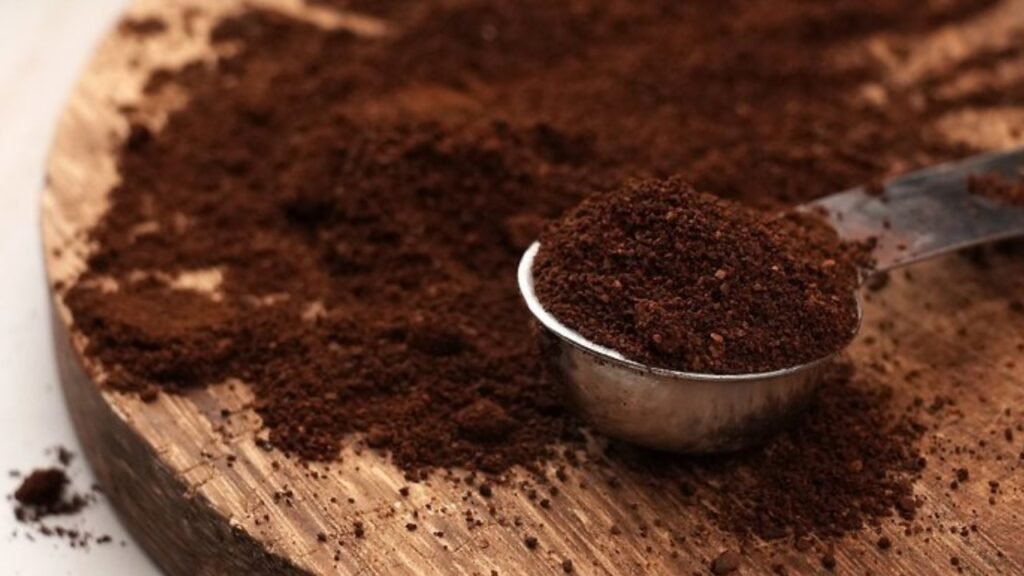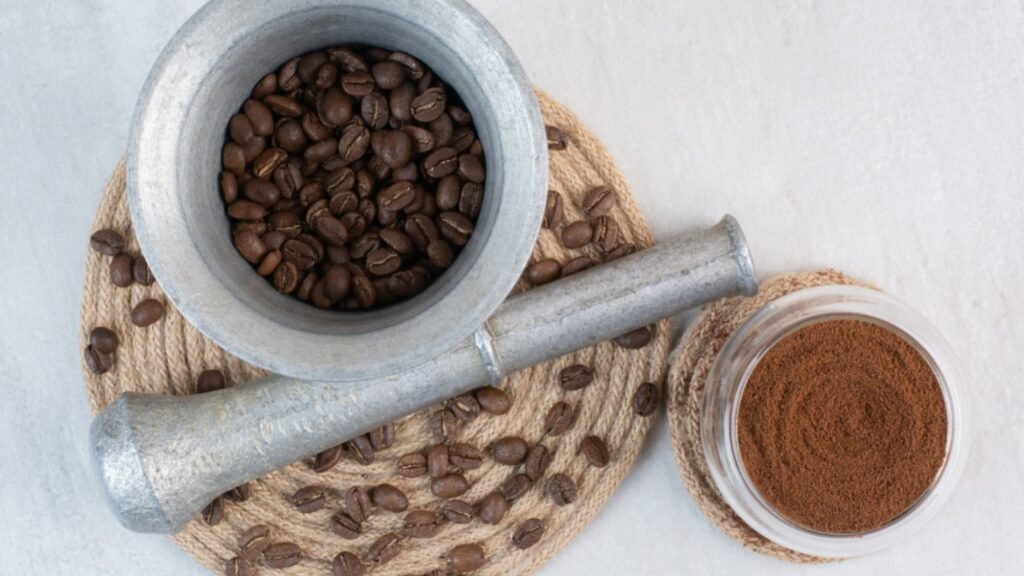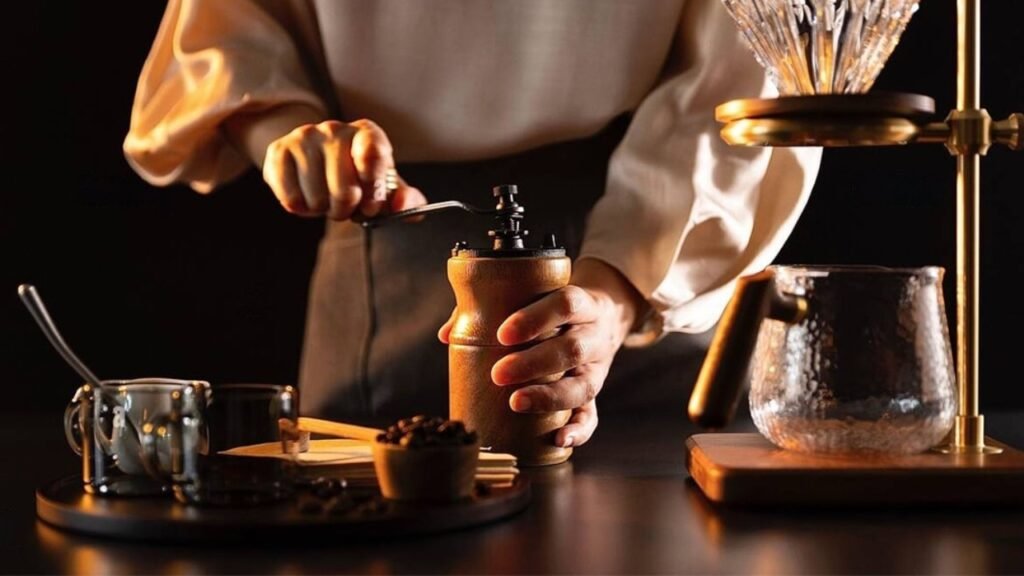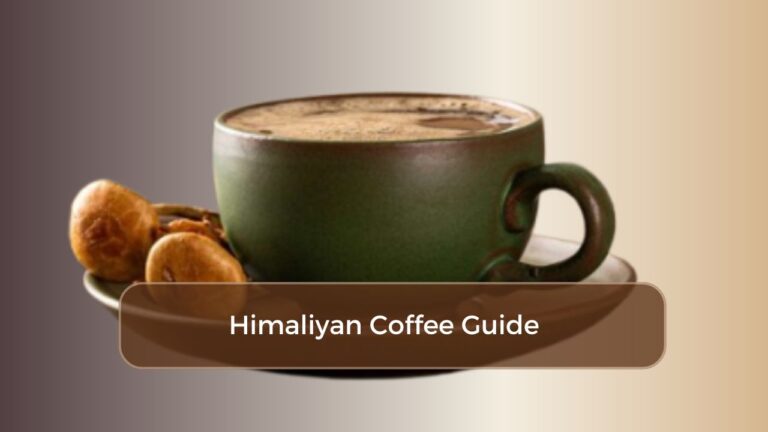How To Grind Coffee Beans Without A Grinder 2025
Half of the coffee consumers are using pre-ground coffee beans, which are easily subject to losing the fancy tastes of freshly ground coffee. This article will teach you how to grind coffee beans without a grinder, which can make your morning cup of coffee step up a notch in this article.
It can help you to survive when you are away, or it may happen that you do not have a grinder at home, it can also help to make your coffee perfect again no matter what. Further, to learn effective techniques that will enable you to get that perfect grind without making use of equipment.
How To Grind Coffee Beans Without A Grinder: Five Ways
When it comes to grinding coffee beans, using a grinder is inevitable, it may sound like a lot of work, but when you use resourcefulness, the results are perfect. The following are five sure ways:
- Use a manual hand grinder
- Blender
- Food Processor
- Rolling Pin
- Pestle and Mortar
Why Is Grinding Important?
The process of grinding is an important element during coffee making, which has been ignored. The trick is in their surface area, in the case of ground coffee beans, in their whole stress, they are exposed to water more of their inner compounds compared to the case of ground coffee seeds.

Flavors come out more efficiently, giving you a cup of coffee full of richness and layering. The fact that you grind your own beans, you are utilizing the freshness of the coffee in its absolute prime. You are using the indie roasters that are focused on the fresh coffee bean rather than the coffee bean, you are tasting the epitome of the coffee.
Once they are grounded, beans start to oxidize, and this reduces all the vibrant flavors inside them. This experience can be even more improved through hand grinding so that one can achieve the grind size of choice, depending on how you wish to prepare it, whether fine grind to create espresso or a coarser quality in a French press.
Why Is Coffee Grind Size Important?
Coffee grind size is the most important part to make delicious coffee, by the bridge between green beans and the ideal cup. A coarse or coarse grind, as an example, will make the extraction slow, and this gives grounds longer time to react with water as compared to a fine grind.
In case of brewing espresso, such a fine grind will be ideal, because the pressure and temperature are made optimal, resulting in thick crema and heavy flavors. On the opposite end, the French press requires a coarse grind as well, so that your coffee will steep successfully without being bitter.
What Size Should I Grind My Coffee? I Need a Coffee Grind Size Chart
Grind size is an important element in the coffee preparation process, which might significantly affect the taste of your coffee. This is the coffee grind size chart you need:
| Brewing Device | Grind Size | Texture Comparison |
|---|---|---|
| Cafetiere | Medium | Caster Sugar |
| Filter | Coarse | Granulated Sugar |
| Stovetop | Coarse | Granulated Sugar |
| Espresso | Very Fine | Soft Sugar |
| Aeropress | Fine | Table Salt |
| Cold Brew | Very Coarse | Sea Salt |
Why Do I Need to be Extra Careful When Grinding Coffee Beans at Home?
When it comes to grinding the coffee beans at home, people assume it is a simple process, but what one needs to understand is that there is some form of grace required to have a brew enjoyment dramatically shifts. The idea behind grinding coffee beans is to get a size that will enable even extraction when brewing.
The risk of an uneven extraction and the final coffee can either taste too bitter or too bland. Besides, though electric burr grinders are largely promoted as the gold standard, producing uniformity, many home solutions also have the potential to provide satisfying results.
An example is that as you use a mortar and pestle, you need to be patient and detail-oriented so that you can not get large pieces since they will upset the balance of your coffee.
How To Grind Coffee Beans Without A Coffee Grinder?
The five ways you can Grind Coffee Beans Without A Grinder are as follows:
How to Grind Coffee With a Blender?
Some blenders have a dedicated setting known as the grinder setting that is actually built to grind the coffee beans

- A good place to begin is to measure out your coffee beans, a usual proportion is approximately two tablespoons of coffee per six ounces of water.
- Put the beans into your kitchen blender and put the lid firmly closed, it is essential to prevent any unpleasant splatters when you start to grind the beans.
- Buzz your beans at a low blender speed first and then switch it to a higher speed to achieve a blitz of beans.
- When trying to obtain a coarse size, check on the consistency, as it can take about 15-30 seconds to blend.
- You attain your desired consistency, switch off the blender, and pour out freshly ground coffee well.
- When washing up, ensure that you do so in time lest some leftover oils adhere to the blades, resulting in poorer subsequent mixes.
How to Grind Coffee Beans With a Pestle and Mortar?
You can find the process of grinding coffee beans using a pestle and mortar.

- Take a measuring spoon and measure your coffee beans out; a pestle and mortar would be perfect to grind small batches.
- Put the beans into the mortar and smash the beans by using the pestle, but gently at intervals of a first one.
- This first smashing aids in the reduction in size of the beans to form the smaller pieces.
- After you have crushed the beans, use circular movement with the pestle.
- Then keep on smashing and grinding until you achieve that desirable combination of smell and texture.
Can You Grind Coffee Beans in a Food Processor?
Yes, a coffee grinder can grind coffee beans in a food processor, but it comes with a bit of finesse. This time, the consistency will still be nowhere near as good compared to the case where you are getting freshly ground coffee, yet you can grind on a good processor nonetheless.

Your food processor should have a larger work bowl, and you will require a higher amount of coffee in this as compared to the blender.
- Pour in a few scoops of beans into the container and move the lid ON
- Grind pulse-like in approximately 3 seconds each. It is better to use short pulses so that the coffee is not overheated and the last cup is not bitter at all
- Shake the processor to retrieve the grinds that have flown to the edges and make your grinding as regular as it is possible
- Stop when you arrive at the grind level that you desire
- Empty your new coffee beans, pour in extra beans, and repeat
How to Grind Coffee with a Rolling Pin?
A rolling pin method of grinding coffee is notably effective and can result in any grind size depending on your brew requirements.

- Start by putting your whole beans in a good food bag, but make sure it is well sealed so that you do not lose any of the beans in the grinding process.
- Not only does this technique leave your kitchen neat, but you can also check the grind size and clean with no mess in the process.
- Hit the beans gently with your rolling pin, pressing down firmly so that you bash them.
- Break them down slowly by employing away rolling method that alternates between pressure and rolling back and forth.
- Give the bag a shake and redistribute the beans after a couple of moments of thrashing.
- It is important to ensure the grinds are similar to each other.
How to Grind Coffee with a Manual Coffee Grinder?
A manual coffee grinder would help you enjoy your brewing experience as it would give you control of the grind size of the whole coffee beans.

- Begin with superior whole coffee beans. Be careful in selecting bean freshness.
- A large number of manual coffee grinders have receptive grind settings.
- To grind the coffee and get your preferred depth of ground coffee, gravitate your preference whether you want your preferred size of coffee.
- Put your whole coffee beans in the top cavity (hopper) of the grinder. Be sure not to fill it to capacity, a complete hopper supplies an even grind.
- Turn on the screw lever to commence grinding. This instructional hand grinder underlines that steady pressure will result in a more even grind.
- Be aware of the sound of feel of grinding. You will feel the difference in the difficulty and sound of turning the handle, which will tell you that the grind size is working.
Conclusion
When considering the method of how to grind coffee beans without a grinder, it is essential to realize the beauty in the process. Although a dedicated grinder recommends precision, there are other methods that could also bring out unexpectedly pleasant results.
The trick is knowing the mechanics of each method, as in grinding with a mortar and pestle to a fine consistency in order to concentrate the flavor, or with a rolling pin to a thinner consistency. All of these ways want to stimulate you to touch your coffee. They encourage you to get a physical experience of your coffee and, from the ordinary routine, make something of a ritual.
FAQs
How to Grind Coffee Beans?
Begin by weighing your desired quantity of coffee beans. When you have measured out the beans, you will have to adjust your grinder, depending on your method of brewing.
Can You Grind Coffee Beans in a Blender?
Yes, although a blender can be used successfully to process coffee beans, it might not result in a consistent grind like that of a coffee grinder.
What is the Best Way to Grind Coffee Beans Without a Grinder?
The mortar and pestle is one of the effective methods. Just pour in a little bit of coffee beans and crush them with the pestle, going around in a circular manner.







